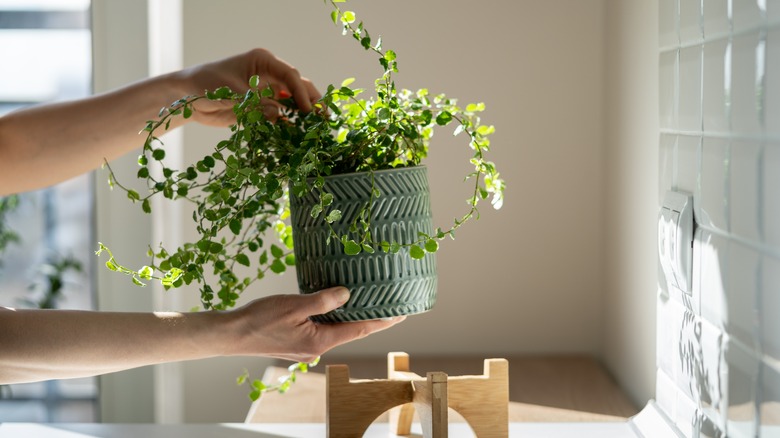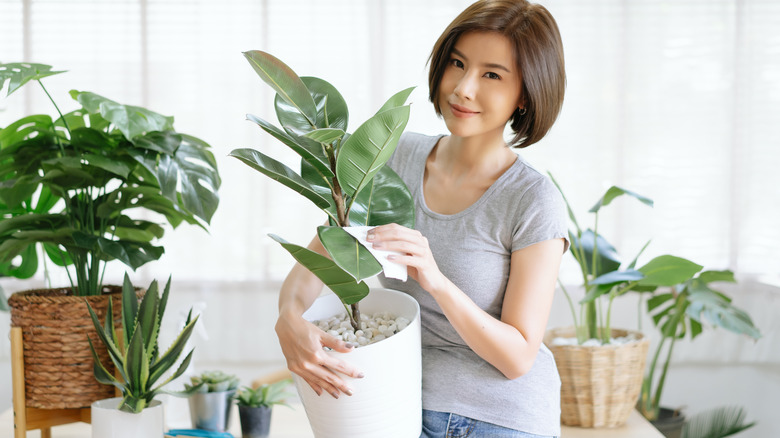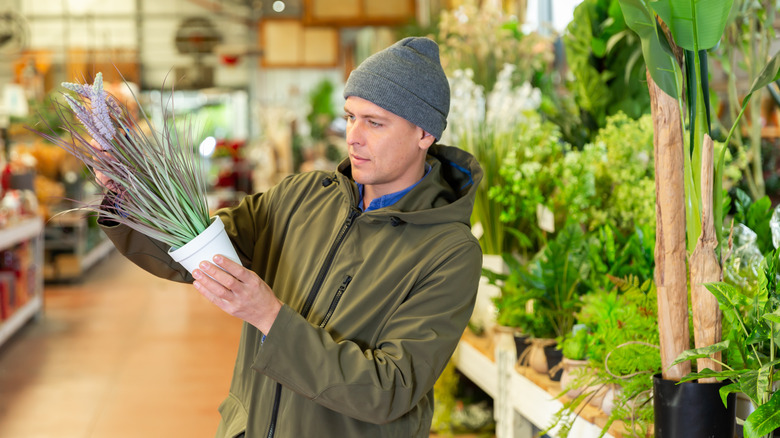Tricks To Make Your Fake Plant Appear Perfectly Imperfect
Faux plants and trees are sometimes the best options for adding needed greenery to a space. While many rooms lack sunlight and proper conditions for real plants to thrive, faux ones demand much less in terms of care, particularly if you travel a lot and are unable to keep them healthy. Faux plants are also great for homes with children and pets who might not be safe around the real thing.
Fake greenery, however, can come with its own challenges, including an artificial look that can often be spotted for a fake. While high-end types are typically the most natural looking, the high cost can often be preventative. Whatever you pay for a fake, one of the best ways to make it look more natural is by manipulating it to appear less perfect and manufactured. By making a few adjustments like trimming, dulling, and bending the leaves, you can make them look much more real than when you bought them. There are also a few key elements to look for while shopping for artificial greenery, which will help the pieces appear more natural.
How to make faux plants look more natural
One of the easiest ways to change the look of your fake plants is to manipulate them into more organic and less symmetrical arrangements. A great way to alter a fake plant to look more real is to trim the leaves. Cutting some of the leaves will make some of them appear smaller, avoiding a too-uniform appearance. This also gives things a more ragged edge that looks a bit less manufactured. For larger plants and trees, removing some of the foliage to create some sparse areas can make the piece look more real.
Faux plants are often way too shiny right out of the package, which can make them easy to spot. Dull the surface of shiny leaves with a matte finishing spray or by rubbing them with clay or mud. If the stems are looking too fake, paint them with shades of green and brown to achieve a more realistic coloring.
You can also add real soil, stones, or moss around the base of the plant, which will instantly make it look more realistic. If all else fails, you can disguise faux greenery better when mixed in with many other plants (real or fake). You can also place fake plants in an inaccessible location, like high up on a shelf, where they will be less obviously artificial to the eye.
What to look for when buying fake plants
When buying fake plants, many experts suggest looking for options with bendable wire stems. This will give you the ability to shape your plants as desired into more naturalistic arrangements. When you get them home, you can shape the greenery to look less symmetrical in its container.
Additionally, more expensive manufacturers often provide the most realistic-looking faux plants made from silk and other materials instead of plastic. They will also often have realistic details in terms of stems and budding leaves. However, even when buying less expensive plants and arrangements, look for those which are less shiny and more irregular. Depending on the variety of plant, dull or subdued shades of green often look more realistic than brighter colorings. Some greenery with a natural waxy sheen like fiddle leaf figs and rubber trees are easier to mistake for real ones due to their already-shiny similarities, so these may be the best types to look for.


